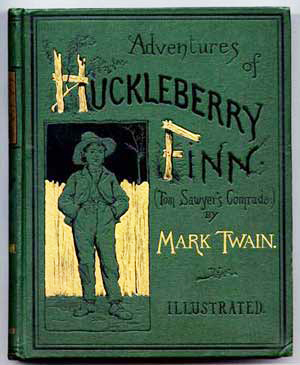
Source: Huckleberry Finn book, Wikimedia
When we read stories, we are drawn to those that have characters, real or imagined, with whom we can identify. These characters don’t have to be like us. In fact, they can be very different from us. However, the most memorable characters are believable. We know that Lorek, the armored bear in The Golden Compass isn’t real; yet the author makes him into such a believable character that we are willing to suspend our disbelief in talking, armored bears and read about him as if he were real.
We also find ways to relate to ordinary characters in our reading. Although we haven’t met a person who is literally enslaved, when we read about Jim in The Adventures of Huckleberry Finn, we can relate to him as easily as we do to friends and family in some ways.
So the question becomes “How do writers do this?” How do they create believable, interesting characters in the stories they write? The answer is that writers develop characters through a variety of techniques: narration, dialogue, interaction with other characters, interaction with setting, and characters' thoughts.